Cash flow is at the crux of moving your business forward. Without it, you can’t pay your bills, make strategic business investments, or seek out external funding. A cash flow statement helps you stay on top of where cash is coming from and going to so you can accurately and intentionally perform these functions
However, cash flow statements can be time-consuming and tricky to create. With a cash flow statement template, you can quickly create accurate cash flow statements as needed.
In this article, we’ll show you how to create a cash flow statement with our cash flow statement template, and level up your entire accounting process.
What is a cash flow statement template?
A cash flow template is a prestructured document that helps you create a “statement of cash flows,” also called the cash flow statement. It’s one of the four key financial statements and details how much cash came into and went out of your business over a specific period of time.
These are called cash receipts and cash disbursements, respectively. Subtracting your outflows from your inflows tells you your net cash flow. A cash flow statement template includes critical information in a reusable document, which makes it much easier to create and share cash flow statements again and again. Here are three categories related to cash flow that you might document in your template:
- Operating activities are cash flows associated with the products or services your business sells, including cash received from sales and costs associated with creating products.
- Financing activities are cash flows associated with a company’s funding sources, including cash received from a bank loan or investment or cash paid to cover interest expenses or dividends.
- Investing activities are cash flows associated with purchases or sales of assets or investments in securities.
Why use a cash flow statement template?
A cash flow statement tells you how much cash you have on hand and what’s causing cash to flow in and out of your business for a time period.
This is important under the accrual method of accounting, where your revenues and cash flows aren’t equal. Given the importance of the cash flow statement, you want to make sure it’s consistent and organized each time.
Here are a few more reasons to start using a template to document your cash flow.
Save time with premade sections
With a template, you don’t have to remake sections or set up formulas each time. Just plug your numbers into the right spots to generate a brand new cash flow statement.
Keep it accurate and professional
Plus, a cash flow statement template will make this financial statement accurate and professional each time. This goes a long way in helping you secure financing from lenders and investors. Using a consistent template also makes it easier to identify mistakes when they occur.
Templates also offer standardization. The statement will look the same every time, so everyone in your organization can learn what your statements look like.
Lay the foundation for smarter investment planning
The template will make your business investment planning a breeze, too. You can use your template to project various cash flow scenarios, such as the cash returns a project could generate, simply by dropping numbers into the correct spots on your template.
What are some examples of cash flow statement templates?
Now that we’ve covered the benefits of using one, let’s explore a few different examples of cash flow statement templates.
Simple cash flow statement template
This is a simple cash flow statement template. It cuts out the detailed subcategories in favor of listing only the totals for operating, investing, and financing activities.
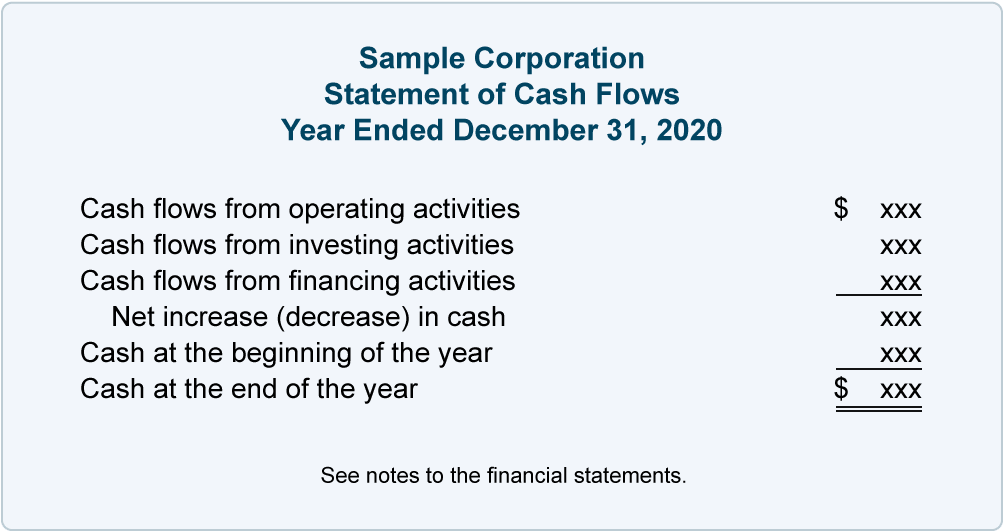
A business might use this simplified cash flow statement template to create one on the fly to highlight some numbers in-house. They may only need a high-level view of their cash flows, and a simple, neat template like this one would serve their needs without overcomplicating things.
Small business cash flow statement template
Here is a standard cash flow statement template for small businesses. It details the subcategories of cash flows within operating, investing, and financing activities.
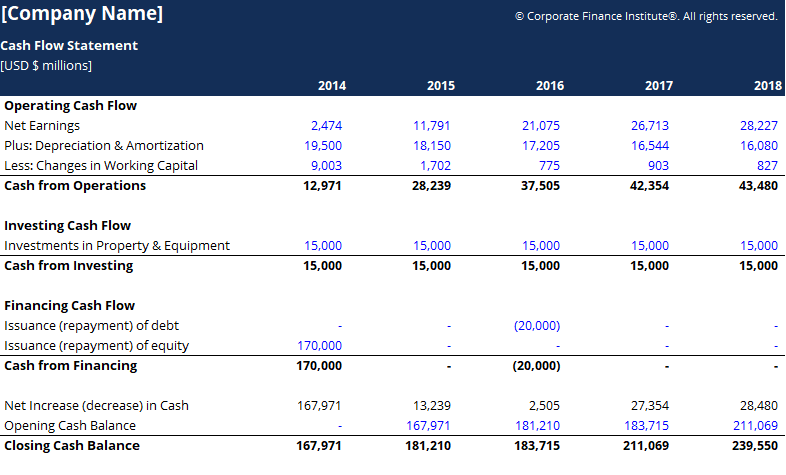
Large corporation cash flow statement template
This cash flow statement template comes from Amazon in the mid-2010s, so it is much more complex.
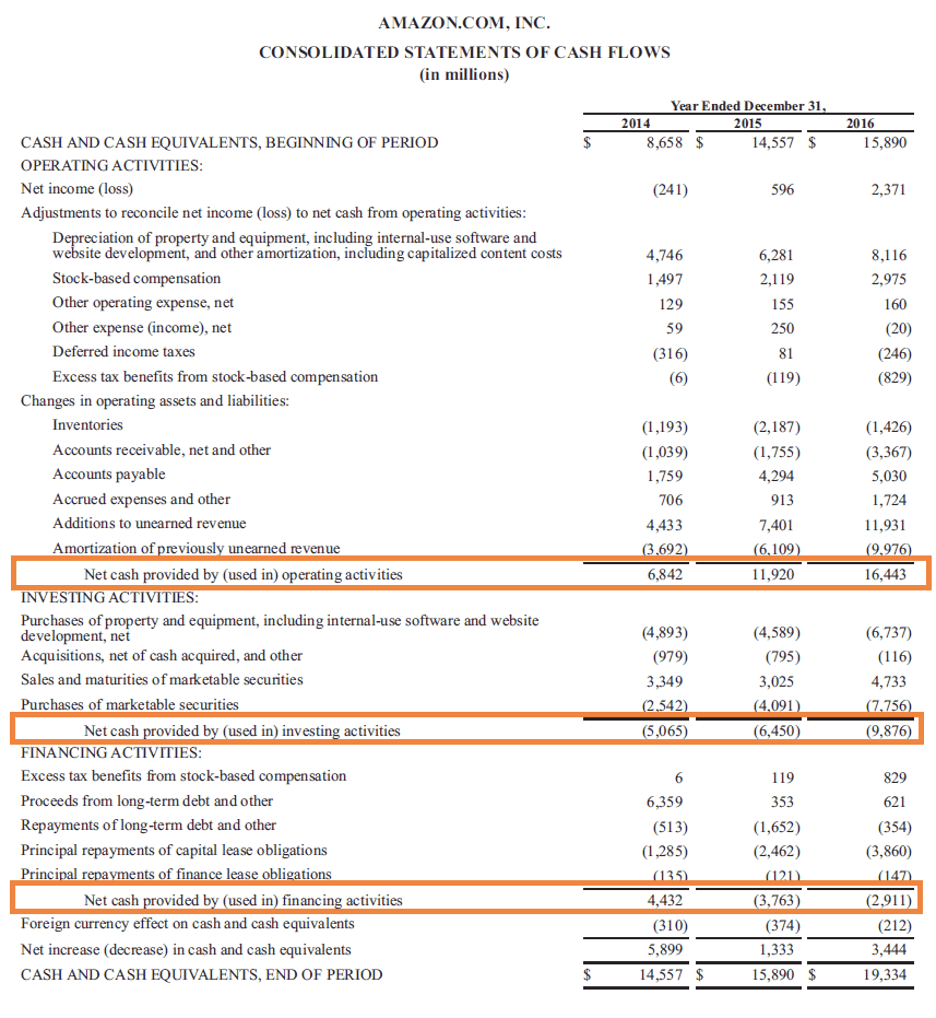
There are several line items within each type of cash flow activity, and it displays data over several years for comparison. The template also uses brackets for negative numbers, which is a standard accounting practice.
Quarterly cash flow statement template
Cash flow statements can be generated for quarterly results, too.
Doing quarterly reports on your company’s cash flow can keep you more in touch with how money flows in and out of your business, enabling you to make course corrections as needed.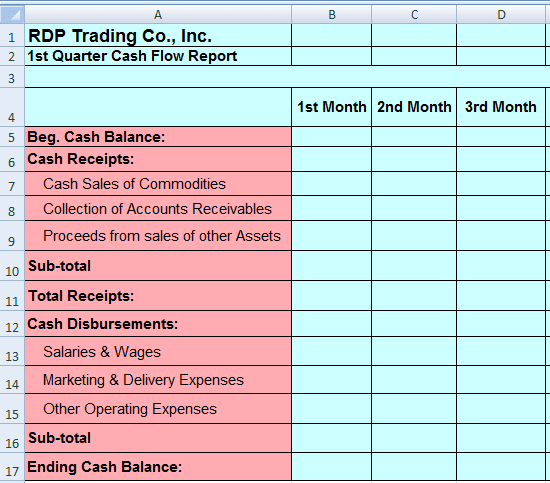
Unlike most annual cash flow statements, this quarterly cash flow statement template splits things up by month and quarter. This template is designed for small businesses, so it doesn’t split up cash flows into operating, investing, and financing activities. Instead, most of its cash flows are operating cash flows.
monday.com’s cash flow statement template
Stock cash flow statement templates may require heavy or cumbersome modification to work with your organization. Others might be too rigid or offer limitations that impede your workflows. monday.com is the perfect solution, offering a delightful balance of customizability and intuitive ease of use.
With monday.com’s cash flow statement template, you can use the drag-and-drop builder to create a helpful yet visually appealing financial statement that you can reuse again and again. Add in formulas, and monday.com will do the math for you every time.
If you’re shifting from Excel to monday.com, don’t worry — you can import your Excel spreadsheet straight into your monday.com workspace.
Connect all your financial statements, budget boards, etc., into one unified accounting workflow and even create a custom monday.com dashboard that will let you track your financials and give you a real-time view of your company’s financial health.
Related monday.com templates
In this section, we introduce related financial statements and budgeting templates from monday.com that can help you manage your finances.
Financial statement template
The cash flow statement is just one of the three main financial statements. An income statement shows your company’s financial performance, a balance sheet summarizes your assets and liabilities, and the statement of retained earnings helps you see how much money you’re leaving in the company.
Regardless of which statement you want to map out, monday.com’s financial statement template is highly customizable, making it easy to create both financial statements with just one template.
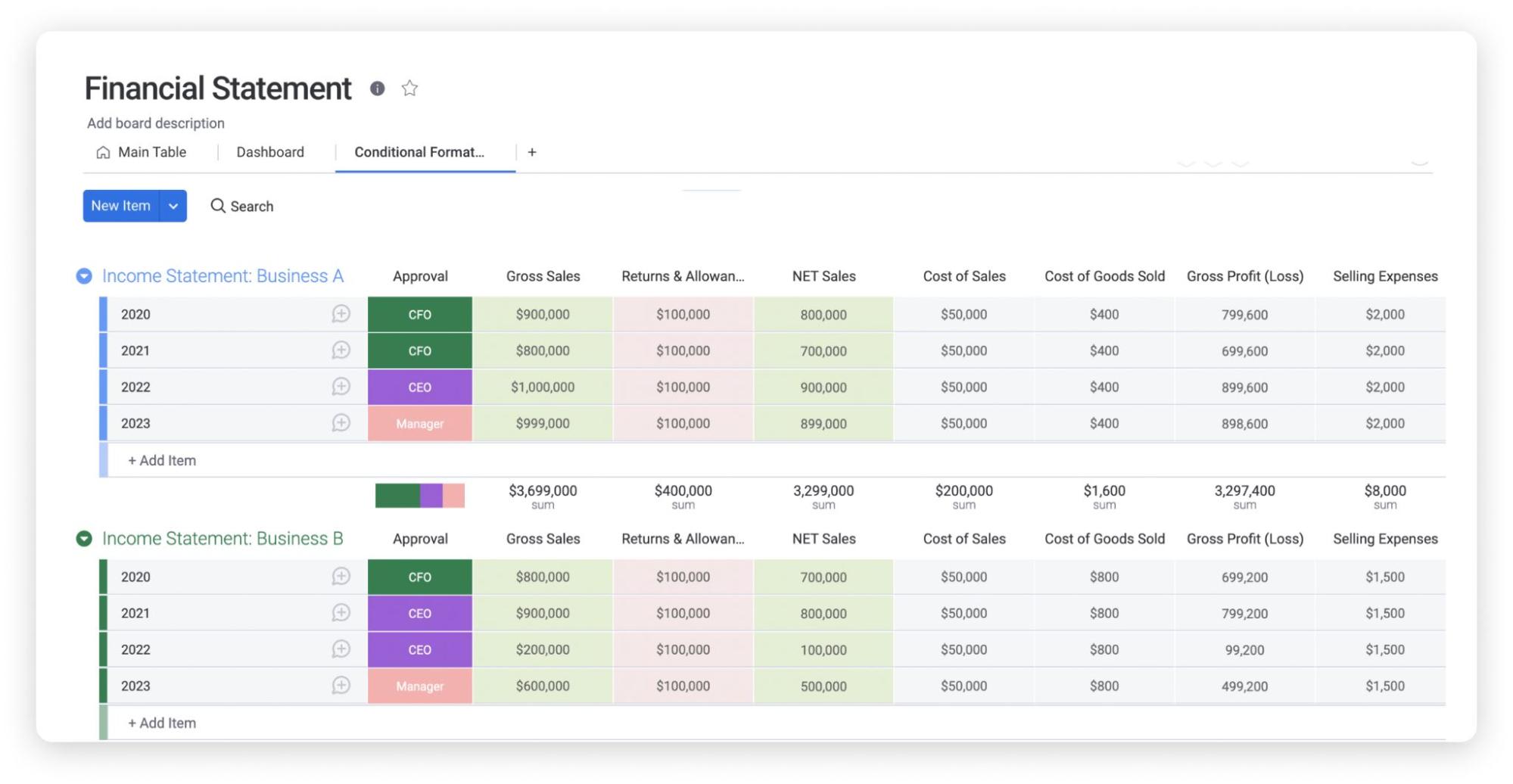
Plus, you can add notifications and assign multiple people so relevant teams — such as accounting — can get their tasks done on time.
Then, you can export your finished financial statements to Excel if you’d like. Alternatively, monday.com’s collaboration features make it easy to share your statements with anyone who needs them.
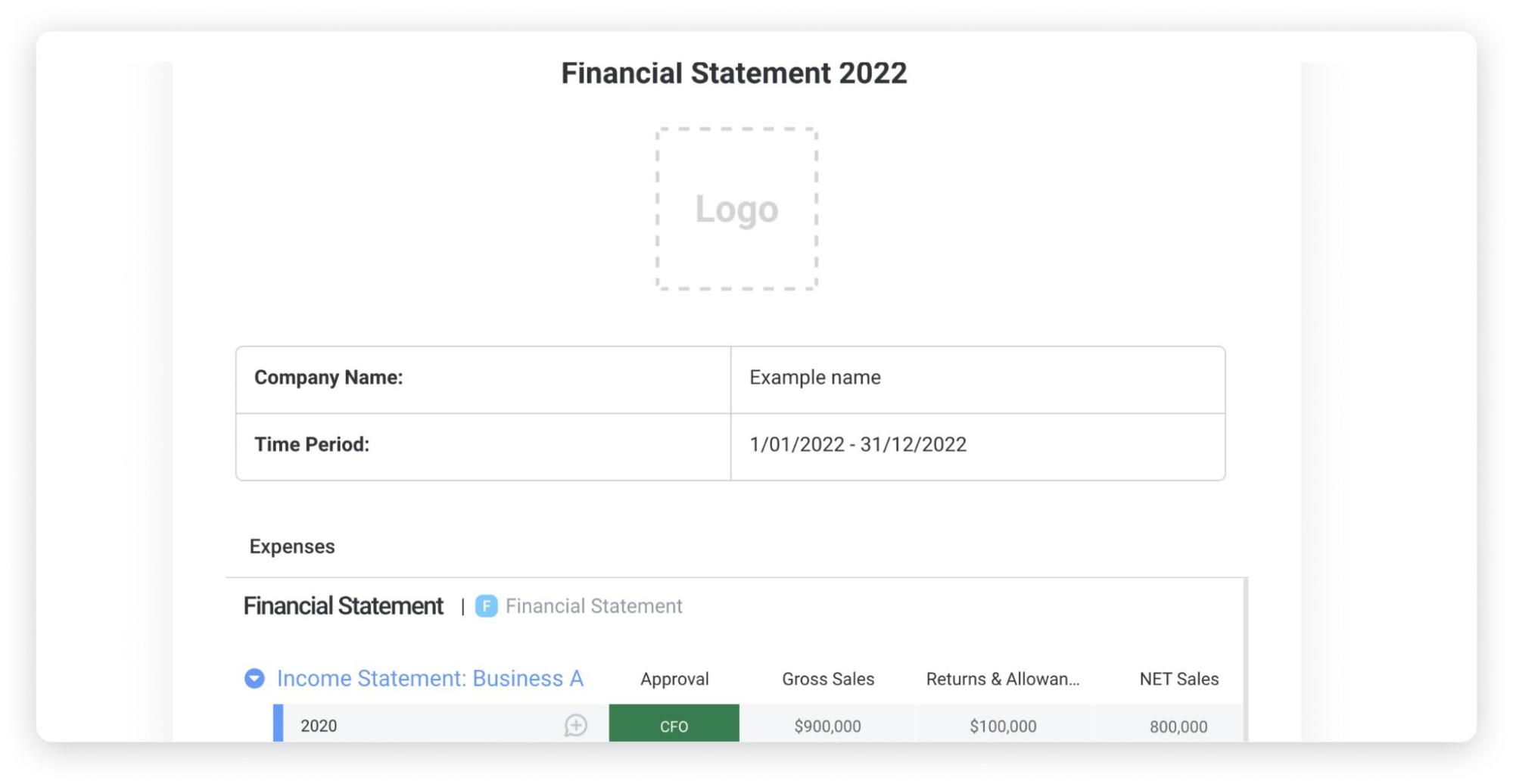
Pro forma template
Generating your financial statements gives you a good idea of where you stand. From there, it’s time to project potential future cash flow and financial performance with a pro forma template.
On monday.com, you can arrange your pro forma template for all financial statements in whatever way best fits your needs. With formulas, you can quickly calculate various financial ratios to analyze future performance in specific situations. Plus, it’s easy to generate different versions of the same pro forma statement, helping you compare different scenarios side-by-side.
Startup budget template
Startups lean heavily on financial statements to persuade investors to put money into the company. But you’ll also need a budget alongside your financial statements. monday.com’s startup budget template is a great place to start. Like all of monday.com’s financial templates, the startup budget template offers full customization, letting you pick and arrange your budgetary categories as you see fit.
FAQs about cash flow statement template
Does Excel have a cash flow template?
Yes, Excel has a cash flow statement template. However, customizing a pre-built Excel template to your needs can be challenging if changes are needed.
With monday.com, customization is much easier. Even if you use an Excel template, you can import it into monday.com for easier customization and collaboration.
How do you do a cash flow statement step by step?
First, you must figure out the cash inflows and outflows for each cash flow item within the three cash flow categories on your template:
- Operating activities
- Investing activities
- Financing activities
After that, you must subtotal each category to determine each one’s net cash inflows or outflows.
Finally, total these subtotals to get your overall net cash flows. If you have positive cash flows, add this number to your cash at the beginning of the period to calculate your new cash position. If you have negative cash flows, subtract them from the beginning cash balance. If this sounds like a lot of work, you can use our intuitive cash flow statement template instead.
What is the format of a cash flow statement?
Cash flow statements have three main sections, cash from operating activities, investing activities, and financing activities.
Each category has line items for cash flow items relevant to that category. For instance, cash outflows to pay loan interest would be a line item in the section for financing activities.
How do you do a simple cash flow in Excel?
Creating a cash flow statement in Excel is easy if you use a template like the one from monday.com — you can export our template as a fully-functioning XLS file. The template will have the categories and formulas — you just need to input the numbers.

